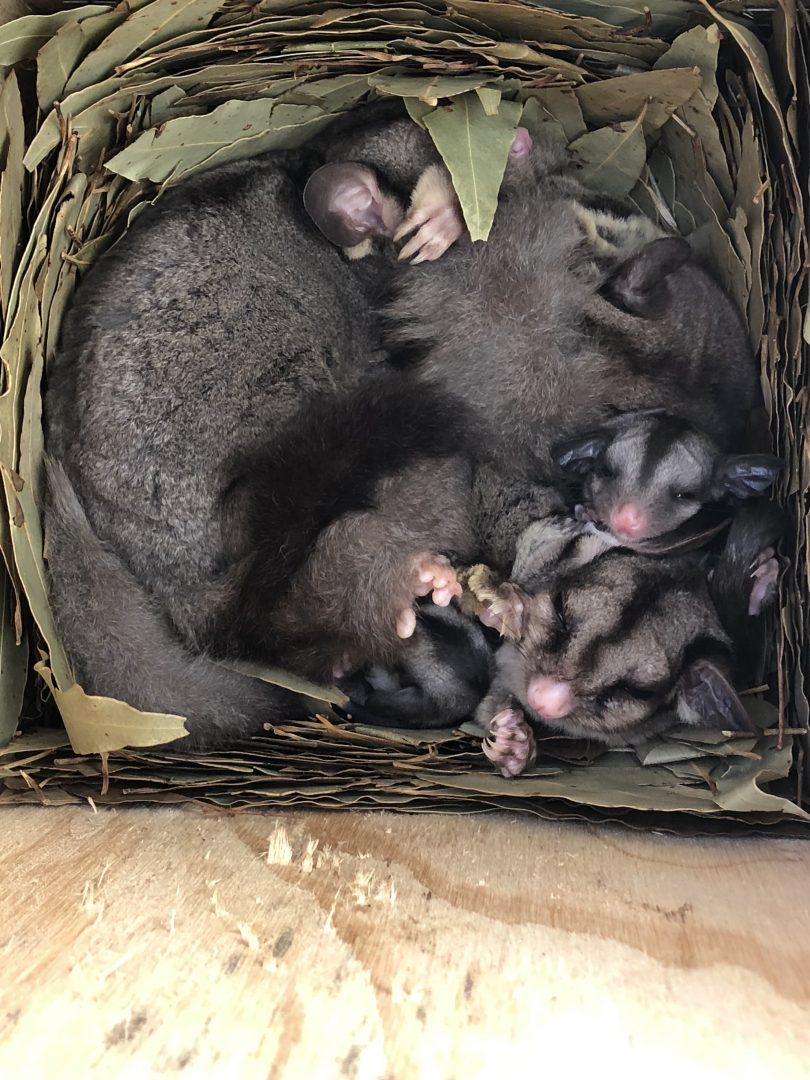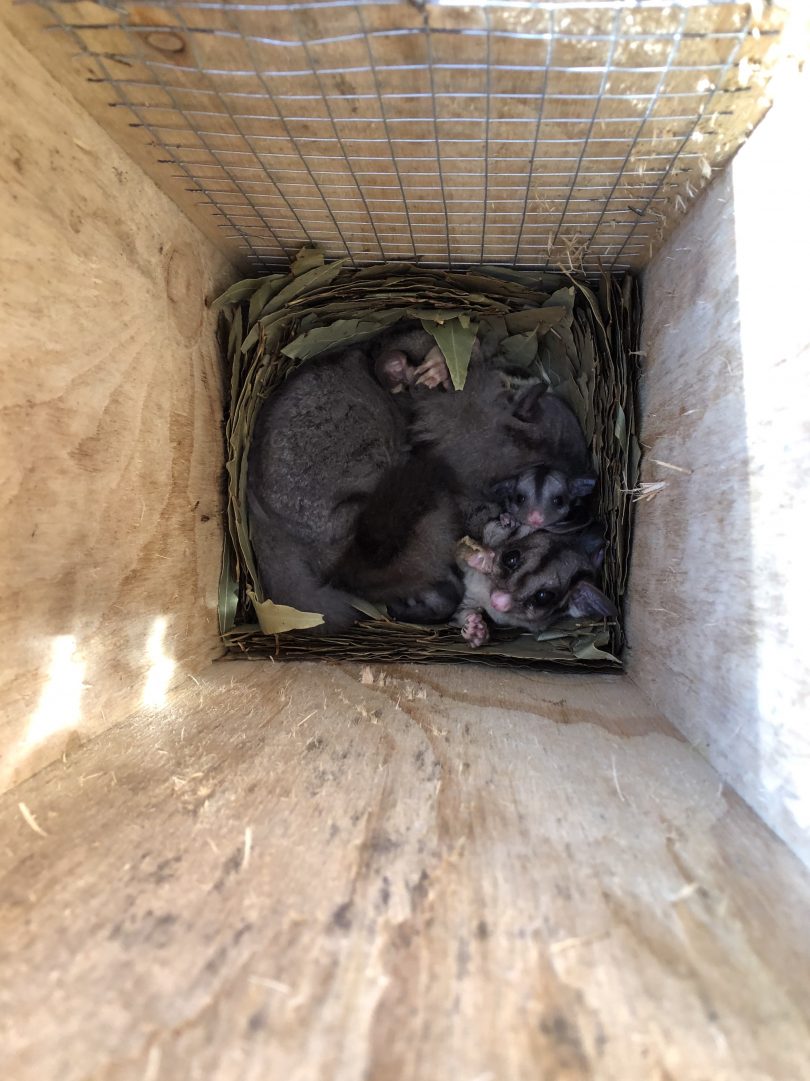
A family of Sugar Gliders nesting at Bega River. Photos: Supplied.
Volunteers from Bega River and Wetlands Landcare (BRAWL) received a wonderful surprise last week when they checked new habitat boxes and found a family of Sugar Gliders nesting.
The group has planted hundreds of trees and shrubs along the Bega River and surrounding wetlands to reinstate habitat for native animals, reduce erosion and beautify the area.
However, trees need to be at least 100 years old before they develop hollows big enough for many hollow-dwelling animals to live in, so the group applied for funding to build 22 habitat boxes.
“We knew there were Sugar Gliders further up the Bega River around Buckajo because a landholder there has had success with gliders nesting in his habitat boxes. We thought we’d give them a try down at the Bega River and see if there were any Sugar Gliders closer to the urban area,” says Ali Rodway, a founding member of BRAWL.
“The boxes have been up since February and last week we did our regular monitoring check to see if they were being used, and to make sure they aren’t being occupied by pest species such as European bees, Starlings, rats or mice.
“We were so happy to discover a family of Sugar Gliders breeding in one!”

“We were so happy to discover a family of Sugar Gliders breeding in one!” – Ali Rodway.
BRAWL has also built habitat boxes for microbats and Crimson Rosellas which are also known to live in the area.
An earlier bat survey indicated that eight types of microbats use the area, of which three are threatened species.
“Having Sugar Gliders and microbats can help keep insect populations under control; in particular, Sugar Gliders help to control Christmas beetles which can destroy trees.”
The program has been funded under the State Government’s National Landcare Program. The habitat boxes were built at a community workshop at Two Sheds Workshop, and BRAWL has launched a community monitoring program for people who are interested in helping to monitor these boxes.
If you would like to get involved, email Erin at BRAWL (no tree climbing is necessary).
Original Article published by Ian Campbell on About Regional.












